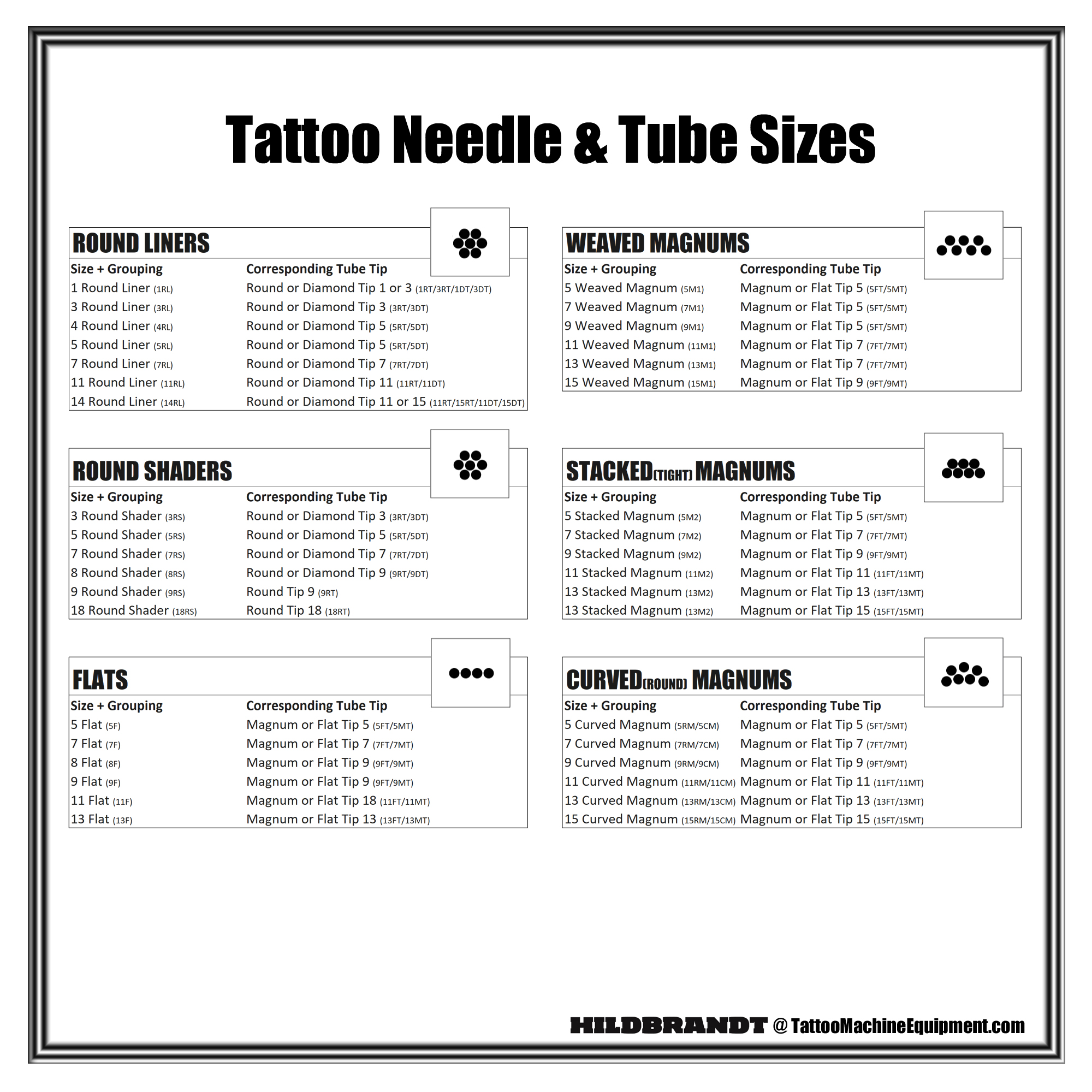The Ultimate Guide To Tattoo Needle Grouping Chart: Understanding The Basics
The Ultimate Guide to Tattoo Needle Grouping Chart: Understanding the Basics
With enthusiasm, let’s navigate through the absorbing topic related to The Ultimate Guide to Tattoo Needle Grouping Chart: Understanding the Basics. We are here to share insightful data and provide a fresh perspective for readers.
Video about The Ultimate Guide to Tattoo Needle Grouping Chart: Understanding the Basics
The Ultimate Guide to Tattoo Needle Grouping Chart: Understanding the Basics

Tattoo artists rely on a diverse range of needles to achieve the desired design, shading, and lines in their artwork. With numerous needle configurations available, it can be overwhelming to determine which needles to use for specific techniques and designs. This is where a tattoo needle grouping chart comes in – a valuable resource that helps artists navigate the complex world of tattoo needles. In this article, we will delve into the world of tattoo needle grouping charts, exploring their significance, types, and applications.
What is a Tattoo Needle Grouping Chart?
A tattoo needle grouping chart is a visual guide that categorizes tattoo needles based on their characteristics, such as gauge, diameter, and taper length. The chart provides a comprehensive overview of the different needle configurations, allowing artists to select the most suitable needles for their specific needs. By using a tattoo needle grouping chart, artists can streamline their workflow, reduce trial and error, and achieve consistent results.
Importance of Tattoo Needle Grouping Chart
A tattoo needle grouping chart is an essential tool for tattoo artists, offering numerous benefits, including:
- Efficient needle selection: The chart enables artists to quickly identify the most suitable needles for specific techniques, designs, and skin types, saving time and reducing the risk of errors.
- Improved consistency: By using the chart to select the correct needles, artists can achieve consistent results, ensuring that their work meets the highest standards.
- Enhanced creativity: With a thorough understanding of the different needle configurations, artists can experiment with new techniques and designs, pushing the boundaries of tattoo art.
- Reduced needle waste: The chart helps artists avoid using incorrect needles, which can lead to waste and unnecessary expenses.
Types of Tattoo Needles
Tattoo needles come in various configurations, each with its unique characteristics and applications. The primary types of tattoo needles include:
- Linework needles: These needles have a tight, rounded loop and are designed for creating fine lines, details, and outlines.
- Shading needles: Shading needles have a looser, more open loop and are used for filling in large areas, creating gradations of tone, and shading.
- Filler needles: Filler needles are designed for filling in small areas and are typically used for creating intricate details and textures.
- Magnum needles: Magnum needles have a loose, open loop and are used for creating thick, bold lines and filling in large areas.
- Weaved needles: Weaved needles have a unique, woven design and are used for creating intricate, detailed work and textures.
Tattoo Needle Grouping Chart: How to Read It
A tattoo needle grouping chart is divided into sections, each representing a specific type of needle. The chart typically includes the following information:
- Needle diameter: The diameter of the needle, measured in millimeters (mm) or inches.
- Gauge: The gauge of the needle, which refers to the thickness of the wire used to create the needle. Lower gauge numbers indicate thicker wires.
- Taper length: The length of the taper, which is the area where the needle tapers from the hub to the point.
- Number of needles: The number of needles in the configuration.
When reading a tattoo needle grouping chart, artists should consider the following factors:
Closure
We hope this article has provided a thorough understanding of The Ultimate Guide to Tattoo Needle Grouping Chart: Understanding the Basics. Thank you for your time and interest. Stay tuned for more articles!.
